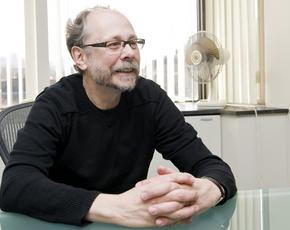Is it possible that your love life is affecting the national economy? Jeremy Greenwood is working to prove just that. The Professor of Economics has been studying the intersection of relationships and economics for well over a decade. His latest paper, “Marry Your Like: Assortative Mating and Income Inequality,” was coauthored alongside University of Mannheim Assistant Professor of Economics Cezar Santos, GR’12, one of Greenwood’s students at Penn; Professor of Economics at Universitat Autònoma de Barcelona Nezih Guner, a previous graduate student of Greenwood’s at the University of Rochester; and University of Konstanz Assistant Professor of Economics Georgi Kocharkov.
Greenwood and company assert that individuals tend to marry within their socioeconomic and cultural circles, creating a vicious cycle that leads to the rich getting richer, and the poor stagnating. Complicating this equation are variables like a higher birth rate among the poor. “Take two wealthy Ivy League-educated parents. If their child has an awful high school math teacher, say for calculus, they might send them to take a university class. Not only does a less-educated couple not have the resources, they might not even know an opportunity like that exists. This kind of scenario perpetuates inequality.”
But to truly understand the complex interrelation between mate choice and money, Greenwood says, you need to go back hundreds of years. “Prior to the 1900s, America was built upon farming families, and you had no choice but to marry a partner suitable for life in an agrarian economy. If one of you was injured in the fields, the closest house might be miles away. Marriage was a simpler equation—it was a matter of survival.”
In his paper "Marriage and Divorce since World War II: Analyzing the Role of Technological Progress on the Formation of Households," Greenwood examined historical surveys and literature to better understand familial structures of the past. One of the best methods for understanding changes in mating patterns, he says, is the evolution of the role of women in society.
“The term ‘spinsters’ was a label used for women who hadn’t yet learned to sew clothes,” says Greenwood. “The assumption was that these women weren’t ready to help lead a family, because they didn’t have the necessary experience. Many of these archaic ideas have value in the sense that they give us a context for the familial dependencies of the past.”
Women’s independence also plays a central role in the shifts in marriage rates over time. One of the main factors, Greenwood says, is the advancement of technology. Domestic duties that previously shoehorned women into the role of dutiful spouse became obsolete with the introduction of new household technology, and allowed both sexes to be more selective in their choice of mate along many dimensions, such as love or money. And though marrying for love might seem like a victory, it isn’t turning out to be a win for everyone.
“The farm family dynamic, where women would have an average of seven children in order to staff the property, is clearly a thing of the past,” says Greenwood. “But people are still marrying within their experience or socioeconomic class. And when the statistics show that less-educated people are having more out-of-wedlock children, getting married later, and divorcing sooner, we need to face the fact that at-risk kids aren’t afforded the same opportunities for getting ahead in society.”
Love and Money
Professor of Economics Jeremy Greenwood investigates the intersection of relationships and economics.
Tuesday, February 25, 2014
Blake Cole



